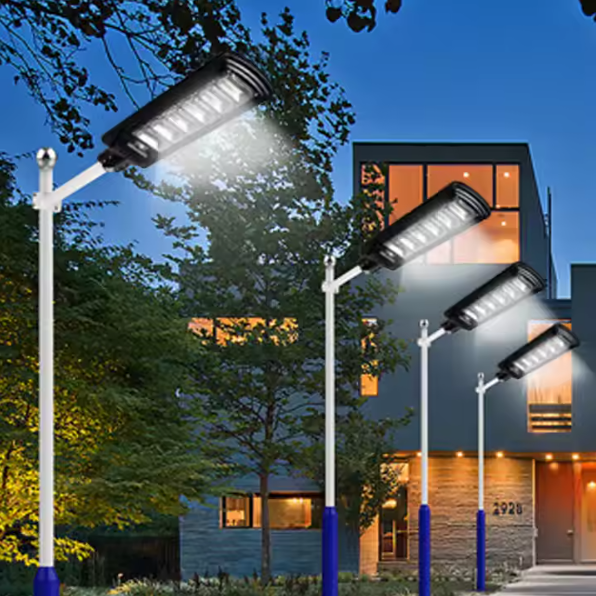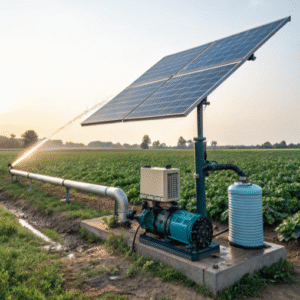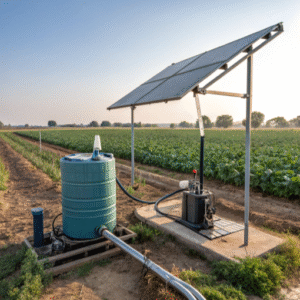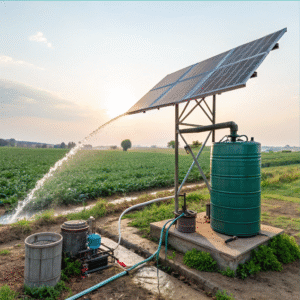What Are the Main Advantages of Using Solar Street Lights Compared to Traditional Ones?
by
What Are the Main Advantages of Using Solar Street Lights Compared to Traditional Ones?
Switching to solar street lights not only saves money but also helps the planet. But how do they stack up against traditional street lighting?
Solar street lights offer cost savings, energy efficiency, and environmental benefits compared to traditional ones. They reduce electricity bills, require minimal maintenance, and operate independently of the grid, making them ideal for remote areas.
Thinking about upgrading your street lighting? Here's why solar might be the best choice for your community or project.
How Does a Solar Street Light Work, and What Components Does It Include?
Ever wondered how solar street lights harness the sun's power to light up our nights?
A solar street light works by converting sunlight into electricity through photovoltaic panels, storing energy in batteries, and powering LEDs at night. Key components include solar panels, batteries, LED fixtures, controllers, and poles.
The Science Behind Solar Street Lights
Let me break it down based on my experience installing these systems. Here's how each component plays its part:
-
Solar Panels: These are the workhorses that convert sunlight into DC electricity. I've worked with both monocrystalline (more efficient) and polycrystalline (more affordable) panels.
-
Battery Bank: Stores energy for nighttime use. Lithium-ion batteries are becoming the standard due to their longer lifespan compared to lead-acid.
-
LED Fixtures: Modern LEDs provide bright illumination while using minimal power. The ones we install typically last 50,000+ hours.
-
Controller: The brain of the system that manages charging/discharging to protect the battery.
-
Pole: Designed to withstand weather while positioning panels and lights optimally.
Here's a comparison of common components:
| Component | Traditional Street Light | Solar Street Light |
|---|---|---|
| Power Source | Grid electricity | Solar panels |
| Light Source | HPS/MH lamps | LED fixtures |
| Maintenance | Frequent bulb replacements | Minimal maintenance |
| Installation | Complex wiring | Independent units |
Solar street lights use photovoltaic panels to generate electricity.True
Photovoltaic panels convert sunlight directly into electrical energy for storage and use.
Traditional street lights are more energy efficient than solar ones.False
Modern solar street lights with LEDs are typically more energy efficient than traditional HPS/MH lamps.
Can Solar Street Lights Work During Cloudy or Rainy Days?
What happens when the sun doesn't shine? Do solar street lights just stop working?
Solar street lights can work during cloudy or rainy days as they store excess energy in batteries. Modern systems typically provide 3-5 days of backup power, ensuring continuous operation during poor weather conditions.
Weatherproof Performance Factors
From my installation experience, here's what determines reliability in bad weather:
- Battery Capacity: We always oversize batteries by 30% to account for consecutive cloudy days
- Panel Efficiency: Higher efficiency panels (20%+) perform better in low-light conditions
- Energy Management: Smart controllers prioritize essential functions during energy shortages
Key considerations:
- Location matters (areas with frequent clouds need larger systems)
- Proper tilt angle maximizes light capture year-round
- Regular cleaning maintains efficiency
A typical performance scenario:
| Weather Condition | Performance Impact |
|---|---|
| Sunny day | Full operation, complete recharge |
| Light clouds | 80-90% normal performance |
| Heavy rain | 60-70% normal performance |
| Snow cover | Requires cleaning for full operation |
What Is the Lifespan of a Typical Solar Street Light?
How long can you expect solar street lights to last before needing replacement?
High-quality solar street lights typically last 5-8 years for the batteries and 10+ years for solar panels and LEDs. Proper maintenance can extend the lifespan to 15 years for the entire system.
Maximizing Your Solar Street Light Lifespan
Through years of maintaining these systems, I've found these factors most affect longevity:
1. Component Quality:
- Premium lithium batteries last longer than lead-acid
- Tier 1 solar panels degrade slower
- Industrial-grade LEDs withstand temperature extremes
2. Maintenance Practices:
- Biannual cleaning of solar panels
- Battery replacements every 5-7 years
- Periodic inspection of connections and mounts
3. Environmental Factors:
- Extreme temperatures affect battery life
- Coastal areas require corrosion-resistant materials
- Proper installation prevents wind damage
Here's a typical lifespan breakdown:
| Component | Average Lifespan |
|---|---|
| Solar Panel | 25+ years |
| LED Fixture | 50,000-100,000 hours |
| Lithium Battery | 5-8 years |
| Controller | 5-10 years |
| Pole Structure | 15-20 years |
Solar street light batteries typically need replacement every 5-8 years.True
Batteries are the first component to need replacement in solar lighting systems.
Solar panels in street lights typically last less than 5 years.False
Quality solar panels can last 25+ years with minimal efficiency loss.
Conclusion
Solar street lights provide significant advantages over traditional lighting through energy savings, lower maintenance, and reliable off-grid operation, making them a smart long-term investment for sustainable illumination.




